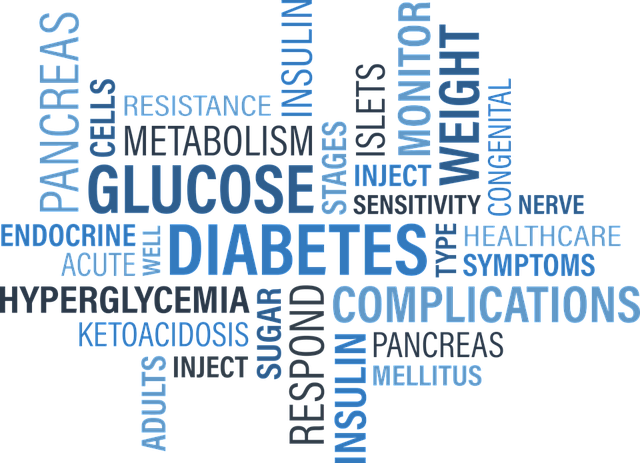 Managing and balancing your blood sugar is a cornerstone of health and can help manage or prevent several diseases associated with a condition called metabolic syndrome. Metabolic syndrome is a dangerous condition that can lead to symptoms like high blood sugar, high blood pressure and weight gain around the middle that’s tough to lose. Metabolic syndrome can predispose people to developing conditions like type 2 diabetes and heart disease.
Managing and balancing your blood sugar is a cornerstone of health and can help manage or prevent several diseases associated with a condition called metabolic syndrome. Metabolic syndrome is a dangerous condition that can lead to symptoms like high blood sugar, high blood pressure and weight gain around the middle that’s tough to lose. Metabolic syndrome can predispose people to developing conditions like type 2 diabetes and heart disease. The root cause of metabolic syndrome is insulin instability, also called insulin resistance. Insulin is the hormone the body secretes to break down and assimilate sugars and carbohydrates.
Insulin is made by the pancreas and is the body’s main tool for managing the amount of sugar in the blood. It helps move sugar from the bloodstream into the muscles, fat cells and other body tissue, turning the sugar into useable energy to fuel body and cells. Insulin and blood sugar have a closely linked relationship. When blood sugar rises, insulin levels in the blood also rise.
The degree to which insulin lowers sugar in the blood stream is the marker of insulin sensitivity. The more a unit of insulin lowers blood sugar, the more sensitive you are insulin’s effects. You want to be sensitive to the effects of insulin. When insulin sensitivity goes down, it’s called insulin resistance. The body responds much less to insulin’s effects and blood sugar levels fail to decrease properly. In some cases blood sugar continues to rise.
Chronically eating too many simple carbohydrates is one of the primary factors that lead to insulin resistance. It is estimated that 32 percent of the U.S. population have insulin resistance. That is why lower carb diets, such as the Paleo, have been growing in popularity. This type of diet emphasizes the right kind of carbs for blood sugar management and excludes carbs that wreak havoc on blood sugar and insulin.
The carbohydrates emphasized by lower carb diets are also lower on the glycemic index. The glycemic index measures food by the amount they raise blood sugar in the body. Foods like bread and soda, though very different, are both high glycemic foods and have a quick, boosting effect on blood sugar and insulin.
To better understand this concept, let’s do a quick lesson on carbohydrates.
Carbohydrates are made up of sugars or molecules that break down into sugars in the body. There are two basic categories of carbohydrates: simple and complex. Simple carbs are categorized as monosaccharaides or disaccharides. Monosaccharaides are made from single molecules, examples are glucose, fructose and galactose. Disaccharides are two sugar molecules liked together, examples of which are lactose, maltose and sucrose.
Complex carbs, are made up of 3 or more sugar molecules that are linked together. For example, 3 to 10 linked sugar molecules are called oligosaccharides and 10 plus sugar molecules are called polysaccharides.
Both simple and complex carbs break down into their basic monosaccharide component, which is used to fuel cells. The difference is how fast each type carb is broken down and absorbed, which dictates its effect on blood sugar. The way the body breaks down carbohydrates depends on the molecules that bond the sugar cells together.
Starch is an example of a simple polysaccharide that is bonded together by alpha linkages. Enzymes in the digestive tract can quickly and easily break down alpha bonds, which absorb quickly and raise blood sugar levels.
Fiber is a type of carb that’s joined together by beta bonds, which are difficult for the body to break down and digest. This buffers the effect that complex carbs have on blood sugar, raising it more slowly and steadily versus the overwhelming effect of simple carbs. With complex carbs, that are full of fiber, insulin doesn’t have to work as hard to manage a blood sugar spike.
As you can see, not all carbs are bad. Healing your body and managing your blood sugar is a matter of picking the right carbs for fuel. Complex, fiber-rich carbs like fruits and veggies are the best choice. Processed, simple carbs like bread, soda and white rice can destabilize blood sugar.
Now you understand which carbs contribute to metabolic health and which carbs detract from it. However, making a transition to a different diet can still be hard and confusing. For example, while whole fruits and veggies have a positive effect on blood sugar, drinking a green juice with lots of fruit juice can make blood sugar rise too quickly.
The 21-Day Body Makeover can make your transition much easier. It emphasizes the right kind of low glycemic carbs to increase energy without increasing waist size or insulin resistance. The 21-Day Body Makeover offers meal plans and shakes that are also high in blood sugar balancing fats and proteins. Check out what eating the right kinds of lower glycemic carbs can do to your health and weight with the 21-Day Body Makeover program. You will be amazed at the results.

